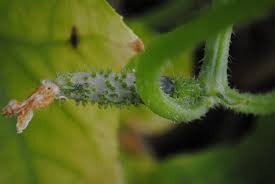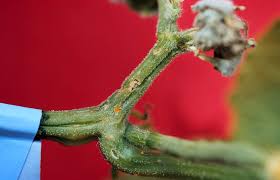cucumber nodes usually refers to the points along a cucumber plant’s stem where leaves, tendrils, and fruit-bearing branches emerge. These nodes are essential for understanding the growth and development of cucumber plants. Here are some key points about cucumber nodes:
A node is a region on the stem of a cucumber plant where a leaf, tendril, or a branch that produces flowers and eventually fruit is attached. The nodes are typically slightly swollen and have a distinct joint-like appearance. At each node, a cucumber plant typically produces a single leaf. These leaves play a crucial role in photosynthesis and contribute to the plant’s overall growth.
Cucumber plants are known for their tendrils, which are slender, coiling structures that help the plant climb and support itself. Tendrils also emerge from nodes and can wrap around nearby supports, allowing the cucumber plant to climb and reach sunlight.
The nodes where female flowers are produced give rise to the cucumber fruit. Female flowers have an ovary that, if pollinated, will develop into a cucumber. These nodes are important for the eventual harvest of cucumbers. Cucumber plants produce both male and female flowers. Male flowers emerge on nodes without an ovary, while female flowers emerge on nodes with an ovary. Bees and other pollinators play a crucial role in transferring pollen from male to female flowers for successful fruit development.
Understanding the arrangement and development of nodes is vital for cucumber growers because it can affect fruit production, spacing, and overall plant health. Proper pruning and training techniques can help optimize cucumber plant growth, fruit yield, and air circulation, reducing the risk of disease.
The Economic Importance and Uses of Cucumber Nodes

Some Economic Importance and Uses of Cucumbers are Below:
1. Culinary Use: Cucumbers are primarily grown for their culinary purposes. They are used in various dishes, including salads, sandwiches, pickles, and cold soups like gazpacho. They add a refreshing, crunchy texture to these dishes.
2. Pickling: Cucumbers are commonly used for making pickles. Pickled cucumbers come in various forms, such as dill pickles, bread and butter pickles, and gherkins, and are popular as condiments.
3. Nutritional Value: Cucumbers are low in calories and a good source of vitamins and minerals, particularly vitamin K and potassium. They are a healthy addition to a balanced diet.
4. Hydration: Cucumbers have a high water content, making them a popular choice for hydration, especially in hot weather.
5. Cosmetics and Skin Care: Cucumber extracts and cucumber-based products are used in cosmetics and skin care products due to their soothing and hydrating properties. Cucumber slices are also applied to reduce puffiness around the eyes.
6. Medical and Health Benefits: Cucumbers are sometimes used in traditional medicine for their potential health benefits, such as anti-inflammatory and antioxidant properties. However, more research is needed to confirm these effects.
7. Alternative to Plastic Straws: Cucumbers have been explored as an environmentally friendly alternative to plastic straws. Hollowed-out cucumber sections can serve as biodegradable straws for drinks.
8. Market Gardening: The cultivation of cucumbers is a source of income for many farmers and gardeners. They can be grown in both backyard gardens and large-scale commercial operations.
9. Exports and International Trade: Cucumbers are a globally traded commodity, and countries often export them to meet the demand for fresh produce and pickles in international markets.
10. Research and Breeding: Cucumber research and breeding programs are aimed at improving crop yield, disease resistance, and overall cucumber quality. These efforts contribute to agricultural development and economic sustainability.
Read Also: 5 Medicinal Health Benefits Of Medeola (Indian Cucumber-Root)
11. Livestock Feed: In some regions, cucumbers that are not suitable for human consumption may be fed to livestock, reducing food waste.
12. Seed Production: The production and sale of cucumber seeds can be a profitable agricultural business. Cucumber seeds are in demand among gardeners and farmers.
The Products and By-products That Can Be Derived From Cucumber Nodes
Cucumber nodes, also known as “cucumber runners” or “cucumber stolons,” are the parts of a cucumber plant that grow horizontally along the ground and give rise to new cucumber plants. While cucumber nodes themselves are not typically harvested for consumption or used for industrial purposes, cucumber plants as a whole have several valuable products and by-products. Here’s a list and explanation of these products and by-products:
1. Cucumbers (Fruits): The primary product derived from cucumber plants is the cucumber fruit itself. Cucumbers are commonly consumed fresh in salads, sandwiches, pickles, and various dishes.
2. Cucumber Seeds: Cucumber seeds can be collected and used for planting new cucumber crops. They can also be consumed and are a good source of nutrients and healthy fats.
3. Cucumber Leaves: While not commonly consumed, cucumber leaves are edible and can be used in salads or as a wrap for other ingredients. They can also be used as a green mulch or compost material.
4. Cucumber Flowers: Cucumber flowers are edible and can be used in salads or as a garnish. They are also attractive to pollinators and can help improve cucumber pollination.
5. Stem and Vine: The cucumber plant’s stem and vine can be used as compost material or mulch in gardening and agriculture.
6. By-Products from Processing: When cucumbers are processed into pickles or other cucumber-based products, there are by-products generated. These by-products may include cucumber peels, which can be used for making cucumber peel chips, or cucumber juice, which can be used to make cucumber beverages.
7. Cucumber Extracts: Extracts from cucumber, including cucumber juice or oil, are sometimes used in cosmetics, skincare products, and spa treatments due to their soothing and hydrating properties.
8. Cucumber Pulp or Puree: Cucumber pulp or puree can be used in the food industry for making sauces, soups, and other culinary applications.
9. Cucumber Scent and Aroma: The fresh scent and aroma of cucumbers are sometimes captured and used in perfumes, soaps, and air fresheners.
10. Animal Feed: Some parts of the cucumber plant, such as leaves and stems, can be used as animal feed for livestock.
11. Compost and Fertilizer: The entire cucumber plant, including any unused or discarded parts, can be composted and used as organic fertilizer for gardens and farms.
12. Biodegradable Packaging Material: Cucumber-based biodegradable packaging materials have been developed, primarily from cucumber peels and cellulose, as an eco-friendly alternative to traditional packaging materials.
In conclusion, while cucumber nodes themselves are not typically harvested or used directly, the cucumber plant as a whole offers a range of products and by-products with various applications in agriculture, food, cosmetics, and more.
Read Also: How Waste Papers, Metals, Woods, Glasses, and Plastics are Recycled

